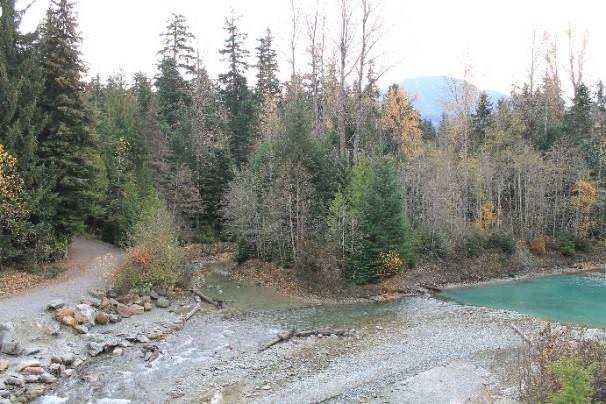
27 Dec The significance of the Squamish Lil’wat Cultural Centre’s location
One of the most frequently asked questions at the Squamish Lil’wat Cultural Centre (SLCC) is why this location was chosen to build our museum. The Cultural Ambassadors’ (our front line staff) typically respond by highlighting the designated parkland across the street, Lost Lake Park, maintaining the centre’s connection to the natural landscape it is situated within. Referencing the floor to ceiling windows that admit natural light into the venue while displaying unobstructed views of the Coast Mountain temperate forest, the Cultural Ambassadors’ explanation appeases inquiring minds.
The long answer, however, has much more meaning and depth:
Our people have been harvesting and travelling this land since time immemorial. There are many culturally modified trees located in the forests surrounding the SLCC, exemplifying that our people have always been harvesting in this area.
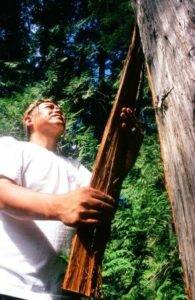
Lex Joseph harvesting cedar bark.
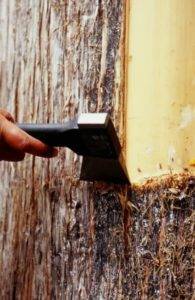
Culturally Modified Trees (CMTs) display signs of cultivation, such as bark stripping. To learn more about CMTs, visit the cedar bark – tree of life exhibit in our Gallery 1.
The Lil’wat Nation chose to live in this area because the land was rich in hunting, fishing, gathering, spiritual training sites and important trade and travel routes. This area was known as the Wolf Clan Territory, where the Wolf Clan (now known as the Wallace Family) resided and had their trap line along Fitzsimmons Creek.
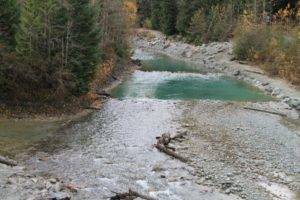
Fitzsimmons Creek, south facing.
Last spring our staff stood on a bridge overlooking Fitzsimmons Creek while learning the old fishing technique our ancestors practiced here. Lex Joseph, a Cultural Technician for the Lil’wat Nation, shared this knowledge with our team and explained that elder men would stay downstream, while the younger men would travel upstream to scare the fish down into nets thrown across the Fitzsimmons. Unfortunately, fish no longer populate Fitzsimmons Creek.
Beyond the significance of the creek, Joseph led staff on a journey through the forest surrounding the SLCC to share the history of this area. He introduced us to the village site that existed here many, many years ago, and showed us where the old pioneer-style cabin was located on the south side of the property, along the Fitzsimmons Creek. Lastly, Joseph brought us to a second site further south along the creek and adjacent to our property, further lamenting the rich history this location represents to our people.
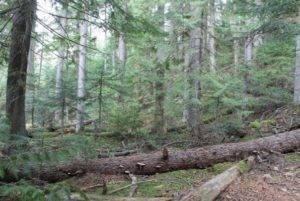
Pioneer-style cabin location, featuring some CMTs.
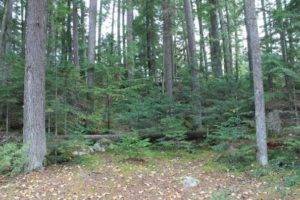
Pioneer-style cabin location.


No Comments